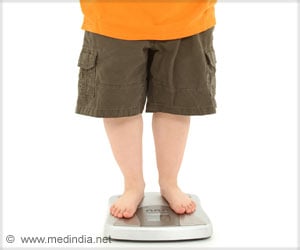Childhood body composition could influence future lung health. The muscle mass and fat mass are very important. Higher muscle mass and lower fat mass in childhood lead to better lung function in adulthood.
- Childhood body composition could help determine lung health in the future
- The amount of muscle mass compared to fat mass in children is very important
- Higher muscle mass and lower fat mass in childhood lead to better lung function upon reaching adulthood
The study has been published in the American Journal of Respiratory and Critical Care Medicine, which is a publication of the American Thoracic Society.
Read More..
Study Background
The present study was based on previous studies that investigated the association between overall body mass and lung function. Since the findings of these studies were contradictory to each other, the present study aimed at addressing these issues from a fresh new perspective.“Some studies related higher body mass with higher lung function while others found higher body mass related to lower lung function,” said Judith Garcia Aymerich, MD, PhD, who is the Head of the Non-communicable Diseases and Environment Program at ISGlobal and senior author of the study. “We hypothesized that previous contradictory results could be attributed to the fact that overall body mass does not account for the different contribution of fat and muscle mass.”
Study Methods
The study included 6,964 participants from the UK Avon Longitudinal Study of Parents and Children (ALSPAC) birth cohort. This is also known as the Children’s of the 90s longitudinal study.The research team used the following methods in the study:
- Dual-Energy X-ray Absorptiometry (DEXA): Also known as bone density scan is a special type of X-ray that measures bone mineral density (BMD) by focusing two X-ray beams of different energy levels on the patient’s bones. This technique was used to distinguish between muscle mass and fat mass, since muscle and fat have different densities.
- Lung Function Test (LFT): This test assesses the health status of the lungs using a technique called Spirometry. It uses a device called a spirometer, which records all the measurements of lung function. The spirometer measures the maximum amount of air that can be breathed out after taking in a deep breath. It also measures how much and how quickly the air can be expelled from the lungs by breathing out. The research team measured the lung function of children at ages 8 and 15 and calculated the increase in lung function during this time period.
Study Findings
The study found that boys and girls having higher muscle mass exhibited higher values for the following parameters, during LFT:- Forced Vital Capacity (FVC): This is the total volume of air a person can exhale after breathing in the maximum volume of air possible. This parameter measures lung size (in liters). It also helps to determine the presence and severity of lung disease.
- Forced Expiratory Volume in one second (FEV1): This is the volume of air that can be forced out of the lungs in one second after taking a deep breath. The FEV1 is important for evaluating chronic obstructive pulmonary disease (COPD) and monitoring its progression.
- Forced Expiratory Flow at 25-75 percent (FEF25-75): This is a measure of the speed with which air comes out of the lungs.
- Higher fat mass in boys and girls was associated with lower FEV1/FVC. This ratio is a measure of airflow limitation, which helps to diagnose conditions such as asthma and COPD.
- Higher fat mass in boys, but not girls, was associated with lower values of FEV1 and FEF25-75.
- Birthweight
- Maternal smoking during pregnancy
- Age of children at puberty
- Lung function levels at age 8
Study Implications
The major research and public health implications of the study include the following:- Body composition and not just total body mass should be estimated while assessing the influence of body weight on health during childhood
- Body composition during childhood and adolescence could influence respiratory health during adulthood
Conclusion
It may be concluded that public health strategies that promote healthy lifestyles are likely to improve lung function as well as reduce the chances of respiratory complications during adulthood. Importantly, these strategies should not only focus on reducing body weight, but also in reducing body fat and increasing muscle mass.Funding Source
This study was funded by the European Union’s Horizon 2020 Research and Innovation Program. The ALSPAC is supported by funds from the UK Medical Research Council, the Wellcome Trust, and the University of Bristol, UK.Reference:
- Childhood Body Composition Trajectories and Adolescent Lung Function: Findings from the ALSPAC Study - (https://www.atsjournals.org/doi/abs/10.1164/rccm.201806-1168OC)
Source-Medindia












